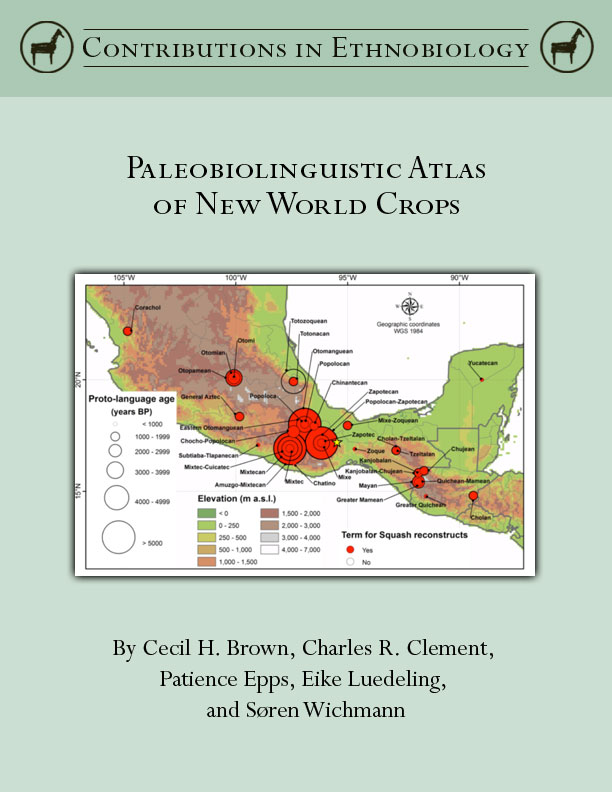Paleobiolinguistic Atlas of New World Crops by Cecil H. Brown, Charles R. Clement, Patience Epps, Eike Luedeling, and Søren Wichmann

Abstract: This online atlas uses the approach of paleobiolinguistics (PBL) to compile maps charting places and dates of Native American prehistoric interest in New World crops such as maize, squash, and beans. PBL maps for 31 different crops are presented.
PBL employs the comparative method of historical linguistics to reconstruct the biodiversity known to human groups of the remote, unrecorded past. Comparison of words for biological species from languages of the same language family facilitates reconstruction of the biological vocabulary of the family’s ancient proto-language. This study uses PBL to establish where and when 31 New World crops developed significance for different prehistoric Native American groups. This entails mapping in both time and geographic space proto-languages for which words for these taxa reconstruct. The atlas includes proto-languages ancestral to all major demonstrated New World language families such as Proto-Algic (North America), Proto-Otomanguean (Middle America), and Proto-Arawakan (South America), and also proto-languages for most minor families.
Each crop is treated in an individual chapter where its PBL maps are presented. These include chapters on Annatto (Bixa orellana), Avocado (Persea americana), Banisterium (Banisteriopsis caapi), Bean (Phaseolus spp.), Brazil Nut (Bertholletia excelsa), Breadnut Tree (Brosimum alicastrum), Cacao (Theobroma cacao), Century Plant (Agave spp.), Chili Pepper (Capsicum spp.), Coca (Erythroxylum coca), Cotton (Gossypium spp.), Genipap (Genipa americana), Goosefoot (Chenopodium spp.), Guava (Psidium guajava), Hog Plum (Spondias spp.), Kapok (Ceiba pentandra), Maize (Zea mays), Mamey Apple (Pouteria sapota), Manioc (Manihot esculenta), Papaya (Carica papaya), Peach Palm (Bactris gasipaes), Peanut (Arachis hypogaea), Pickle Tree (Byrsonima crassifolia), Pigweed (Amaranthus hybridus), Pineapple (Ananas comosus), Pricklenut Tree (Guazuma ulmifolia), Prickly Pear (Opuntia spp.), Squash (Cucurbita spp.), Sweet Potato (Ipomoea batatas), Tobacco (Nicotiana spp.), and Vegetable Pear (Sechium edule). Chapter discussions include information on crops relating to domestication and dispersal as provided by archeobotanists and plant geneticists. Also, general chapters are included of a comparative nature presenting conclusions concerning the development and history of New World agriculture based on PBL and other data.
